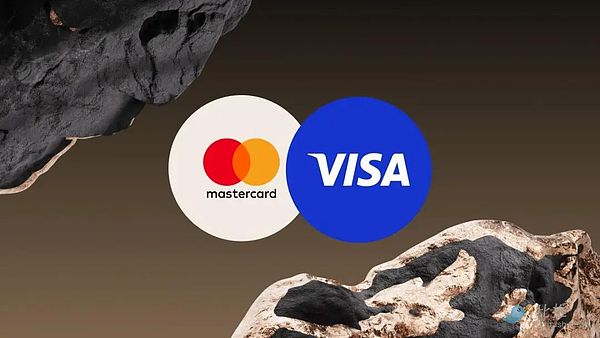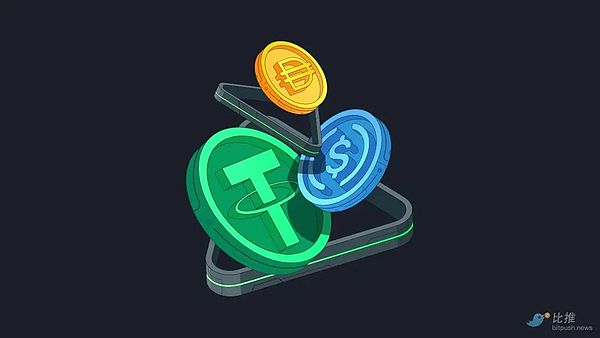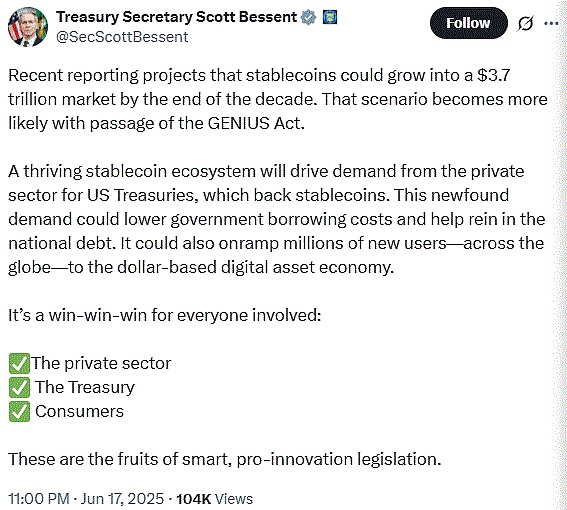In the digital payment domain, an intense territorial battle is unfolding, with payment giants Visa and Mastercard, who once dominated the market, now facing a direct challenge from the emerging stablecoin wave. This is not just a technological innovation, but a strategic battle for the future of payment leadership.

Stablecoins: A Threat to Emerging Payment Methods
For a long time, Visa and Mastercard have held an undisputed position in digital payments through their extensive networks and powerful brands. However, the rise of a new type of digital currency—stablecoins—is challenging their traditional business model with unprecedented advantages.
The core threats include:
Cost Advantage: Stablecoins allow consumers to pay merchants directly from crypto wallets, bypassing traditional bank and card network routing. This means significantly reducing or even eliminating the massive "transaction fees" merchants pay to card networks annually (approximately $187 billion in the US last year).
Efficiency Improvement: Stablecoins promise faster settlement, especially for cross-border payments, with their instant and low-cost advantages being particularly prominent—a key use case for stablecoins.
Bypassing Giants: Stablecoins provide a way to complete transactions without relying on Visa and Mastercard networks, potentially fundamentally undermining these giants' core position in the payment ecosystem.

The explosive growth of the stablecoin market further intensifies this threat. Currently, the stablecoin market cap has reached $253 billion, with U.S. Treasury Secretary Scott Bessent predicting it could exceed $3 trillion in the coming years.

This massive market potential has attracted tech companies, crypto startups, and even large retailers (such as Walmart considering a stablecoin pilot) to enter the field, collectively driving the development of the stablecoin payment ecosystem.
Within the crypto industry, stablecoins have evolved from mere crypto asset anchors to foundational infrastructure for the digital economy, with increasingly mature application scenarios and ecosystem development, further accelerating the impact on traditional payment systems:
DeFi Core Pillar: Stablecoins are the core of the DeFi ecosystem, playing an indispensable role in lending, collateralization, liquidity mining, and decentralized exchanges (DEX). The massive stablecoin funds flowing through DeFi protocols demonstrate their efficiency and widespread acceptance as digital dollars.
Enhanced Cross-Chain Interoperability: With advances in cross-chain technology (like LayerZero), mainstream stablecoins such as USDT and USDC have been deployed across multiple chains and can seamlessly transfer between different blockchains via bridging technology. For example, Bitfinex's Layer 1 blockchain Stable uses Tether's USDT as its native gas token and integrates LayerZero's decentralized USDT0 token, aiming to build a more efficient, low-cost native stablecoin payment network.
Deepening Enterprise and Institutional Applications: More crypto institutions and Web3 enterprises are using stablecoins as their internal standard for fund management and payment settlement. Institutional investors are also beginning to use stablecoins for large-scale, rapid over-the-counter (OTC) trades and cross-border settlements, significantly reducing fees and time costs of traditional banking channels.
Real World Assets (RWA) Tokenization Wave: Stablecoins serve as a bridge connecting RWA to the blockchain world. As more real-world assets are tokenized and moved on-chain, stablecoins will further expand their use cases in trading and clearing traditional financial assets.
New Payment Route Construction: Beyond Shopify's collaboration with Stripe and Coinbase, Coinbase has launched its own payment platform aimed at supporting more e-commerce providers to directly accept stablecoin payments, offering a 1% USDC cashback incentive to establish a new payment link directly between merchants and consumers, completely bypassing traditional card networks. Additionally, banking technology provider Fiserv has launched its own fiat-backed token to help small financial institutions keep up with payment innovation.
These industry actions collectively construct an increasingly mature and powerful stablecoin payment network, directly challenging the traditional payment routing relied upon by Visa and Mastercard.
Visa and Mastercard's "Counterattack" and Strategies
Facing the stablecoin impact, Visa and Mastercard are actively adjusting strategies, attempting to transform from "old-fashioned fee collectors" to "backbones of various digital transactions," even if these transactions were initially designed to circumvent them.
Key response strategies include:
Integration and Coexistence: The two giants no longer view stablecoins as pure competitors but are trying to "absorb" them into their own networks. They have historical precedents of integrating competitors to maintain pricing power.
Technical Upgrades and Service Expansion:
Stablecoin Settlement and Crypto Cards: Strongly promoting their capabilities in stablecoin settlement and crypto-linked cards.
Cross-Border Payments: Emphasizing advantages in cross-border payments, which overlap with popular stablecoin use cases.
Tokenization Technology: Utilizing existing tokenization technologies (such as obscuring account information to protect consumers) and extending them to crypto assets. Visa's Chief Product and Strategy Officer Jack Forestell states that while tokenization currently primarily involves bank accounts or credit lines, there's "absolutely no reason it can't be stablecoins or other cryptocurrencies".
Investment and Collaboration: Visa Ventures has invested in stablecoin infrastructure provider BVNK. Mastercard has joined the Paxos Global Dollar Network, supporting institutional minting and redemption of USDG stablecoins, and supporting Fiserv's FIUSD, PayPal's PYUSD, and Circle's USDC.
Flexible Payment Routing: Mastercard is exploring more granular payment routing control, such as routing small transactions through checking accounts, large transactions through credit lines, and transactions from specific merchants potentially deducted from crypto wallets—all linked to a single payment identity.
Mastercard's Chief Product Officer Jorn Lambert believes the emergence of stablecoins is more about "new use cases and opportunities" rather than "replacing existing systems," especially in remittances, payments, and business-to-business transactions.
Challenges in Stablecoin Adoption
Despite promising prospects, stablecoins still face numerous challenges in completely disrupting traditional card networks, especially in the United States:
Consumer Habits and Benefits: U.S. consumers are accustomed to credit card rewards, fraud protection, and convenient credit access—advantages that stablecoins currently struggle to fully replace.
Awareness and Trust: For many ordinary consumers, cryptocurrencies remain unfamiliar and even suspicious, and stablecoin balances currently do not enjoy traditional financial protections like FDIC insurance.
Merchant Risks and Compliance: Adopting new payment technologies may bring compliance, tax, and operational risks for merchants, which will require time and education to overcome.
Improvement of Regulatory Framework: Although the U.S. Congress is advancing stablecoin regulatory legislation such as the GENIUS Act, which represents an important step towards regulation, a comprehensive and globally unified regulatory framework is still under construction and improvement. This brings significant uncertainty to the large-scale adoption of stablecoins.
Lack of Global Consensus: There are huge differences among countries and regions in the definition, issuance, reserve requirements, anti-money laundering (AML), and know-your-customer (KYC) standards for stablecoins. For example, the EU's MiCA (Markets in Crypto-Assets) regulation is relatively mature, while the United States is still exploring different paths at the federal and state levels. This fragmented and uncoordinated status makes it difficult for stablecoin issuers and users to operate seamlessly on a global scale.
Compliance Costs and Risks: For stablecoin issuers operating across borders, complying with multiple different and sometimes conflicting regulations will be extremely costly and complex. This uncertainty also increases potential legal and regulatory risks, which may lead to future fines or business restrictions.
Institutional Concerns: Traditional financial institutions, large enterprises, and broader investors often maintain a wait-and-see attitude in the absence of clear and stable legal and regulatory guidelines. They are concerned that future policy changes may affect the safety of their assets or the legality of their operations, thereby limiting the large-scale integration and application of stablecoins in the mainstream financial system.
Consumer Protection Concerns: Although some bills are dedicated to protecting consumers, the consumer protection mechanisms for stablecoins are not yet fully clear and unified compared to federal insurance for traditional bank deposits, which may affect ordinary users' confidence in their safety.

Can Stablecoins Completely Disrupt the Traditional Payment System?
So, will Visa and Mastercard be disrupted by stablecoins? From the current perspective, it is more likely to be an "evolution" rather than a "complete disruption".
History shows that the emergence of new payment methods such as mobile wallets and "buy now, pay later" have also triggered "disruption" warnings, but ultimately evolved into adaptation and integration by existing giants. Forrester of Visa points out that while crypto-native users can send funds back and forth, to achieve widespread daily use, "super-large-scale connectivity" is needed, which is precisely what Visa and Mastercard can best provide as an "entry point".
Payment giants are using their massive user base, global merchant network, strong risk control capabilities, and brand trust to absorb stablecoins as a new tool into their existing ecosystem, actively investing and adjusting their technical architecture. Their goal is to make stablecoins a new form of "value" within their existing "pipeline", rather than a complete replacement.
Therefore, the scenario of stablecoins completely replacing existing card networks "overnight" is unlikely in the short term. However, the pressure brought by stablecoins will continue to force Visa and Mastercard to make profound strategic adjustments and technological innovations. The future payment landscape will likely be a hybrid ecosystem that integrates traditional infrastructure with blockchain technology, and Visa and Mastercard are actively seeking to continue playing a core role within it, but they must adapt and integrate these new "crypto pipelines" to maintain their leadership in digital payments.







